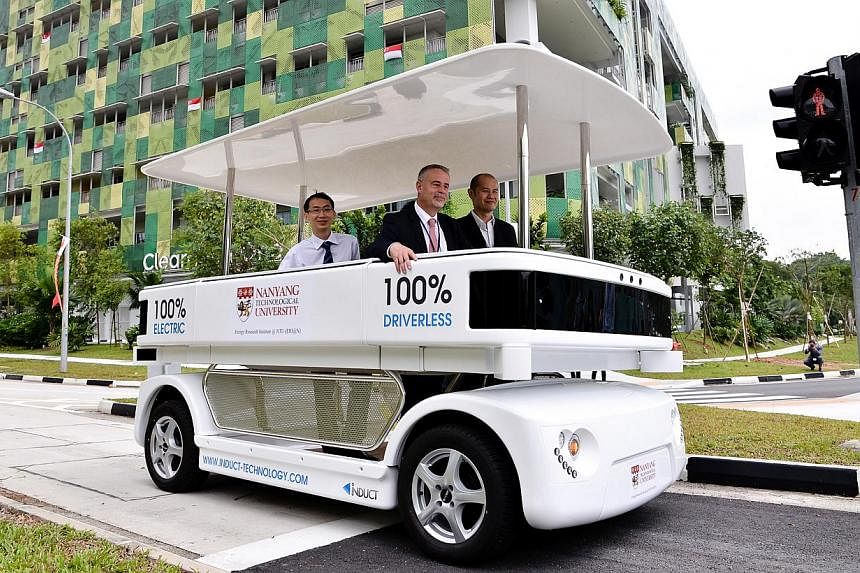Singapore may soon see driverless buses and cars on the roads with a government committee already set up to oversee research into such technology. Here are five facts about driverless vehicles:
1. Driverless - or autonomous - vehicles "drive themselves" with the help of artificial intelligence
Sensory equipment such as cameras, radar and lasers help such vehicles "see" the road ahead, detecting objects and how fast they are moving, and allowing the vehicle to mimic the decisions a human driver would make in any given situation.
Global Positioning System, or GPS, helps the vehicle pinpoint its location.
2. Trials here have already begun
Singapore's first driverless shuttle transportation system - named Navia - carries passengers on a pre-programmed route between Nanyang Technological University (NTU) and the CleanTech Park of JTC Corporation.
Navia is manufactured by Induct Technologies, in partnership with NTU and JTC and with the support of the Singapore Economic Development Board. It can carry eight passengers and has a maximum speed of 20.1kmh.
A two-year collaboration will see the Energy Research Institute@NTU test and optimise Navia and enable it to intermingle safely with traffic in Singapore, as well as improving electric vehicle battery reliability and charging speeds.
3. NUS has one too
Its Singapore-made driverless vehicle is called the Shared Computer Operated Transport, or Scot, was launched in January 2014 by the Singapore-MIT Alliance for Research and Technology (Smart) and the National University of Singapore.
Starting with a Mitsubishi i-MiEV electric car, researchers retrofitted it at a cost of $30,000 so it would drive programmed routes.
The car, which seats four and has a top speed of 130kmh, uses laser sensors with a 30m range to detect and avoid obstacles in its path. It also uses remote sensing technology that allows it to function without relying on the Global Positioning System. The researchers also wrote the maps used by the Scot to get from place to place.
4. Google is onboard too
Of all the companies developing driverless vehicle technologies, perhaps the most oddball is Google. On reflection however, the search engine company has related technologies it can put to good use in a driverless vehicle in Google maps and Street View.
The company launched 100 vehicles at its California headquarters on May 27. The cute little two-seater has only a panic button and a start button, no steering wheel or pedals. Its top speed is limited to 25mph (40kmph).
Watch a video of the car going on a test drive with people on YouTube.
5. Such cars are being tested in a number of places, including Britain and the US
Three cities across Britain will be selected to host driverless car trials from next year, with each test to last between 18 and 36 months starting in January 2015.
A £10 million (S$21 million) fund has been created to cover the costs and will be divided among the three successful cities.
The testing of driverless cars has already been approved in California, Nevada and Florida, in the United States.

